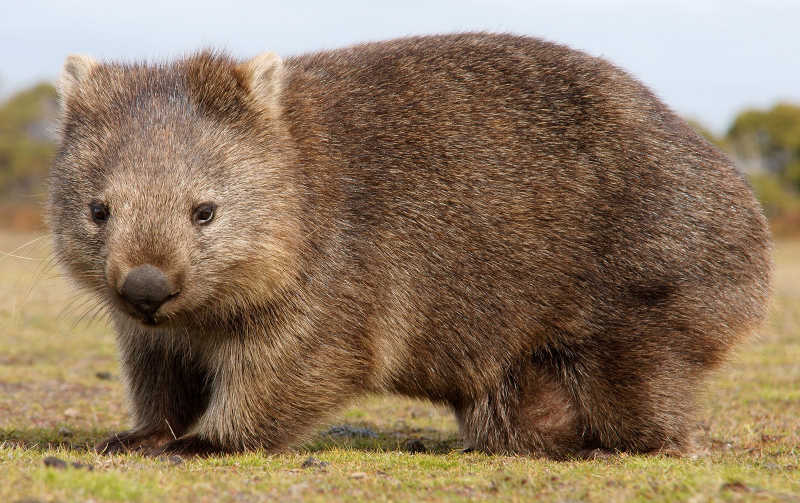Wombat
Wombats are one of Australia's most beloved marsupials, known for their quirky traits and adorable appearance. They belong to a family of marsupials that includes the koala, their closest living relative. Despite their cuddly looks, wombats are robust and have several unique characteristics that set them apart in the animal kingdom.
One of the most fascinating aspects of wombats is their cubic poop. Yes, you read that right! Wombats excrete cube-shaped feces. This peculiar shape prevents their droppings from rolling away, marking their territory on rocks and logs effectively. It's one of nature's more unusual designs and certainly a conversation starter.
Wombats have a rather unusual defense mechanism: their behind. When threatened, they dive into their burrows and use their tough rear to block the entrance. Their backside, primarily composed of cartilage, is resistant to scratches and bites. Incredibly, they can even crush the skulls of predators with their powerful rear ends.
There are three subspecies of wombat: the Bare-Nosed Wombat (Vombatus Ursinus), Southern Hairy-nosed (Lasiorhinus latifrons), and Northern Hairy Nosed (Lasiorhinus krefftii). Each has its own distinct characteristics and habitat preferences. These creatures are social, often forming groups known as a wisdom.
Wombats are hefty creatures, with the heaviest recorded wombat weighing 38kg, about the weight of four koalas combined. Despite their bulky build, they are surprisingly fast, capable of running at speeds of 40 km/h. This speed is just a bit slower than the fastest humans!
Another distinctive feature of wombats is their ever-growing teeth. Like rodents, their teeth continue to grow throughout their lives. This adaptation is crucial as it compensates for the wear and tear from munching on grasses, roots, shrubs, and vegetables. Their digestive system is equally remarkable. Wombats have a slow metabolism, and their guts can hold food for up to 70 hours, taking four to six days to digest a meal fully.
Wombats are the second largest of all marsupials, following the Red Kangaroo. The largest ever marsupial was the Diprotodon, a wombat-like creature standing around 2 meters tall.
Key Takeaways:
- Type: Wombats are robust, burrowing marsupials from Australia.
- Size: They are one of the largest marsupials.
- Weight: The heaviest recorded was 38kg.
- Diet: They feed on grasses, roots, shrubs, and vegetables.
- Average Lifespan: They can live up to 15 years in the wild.











